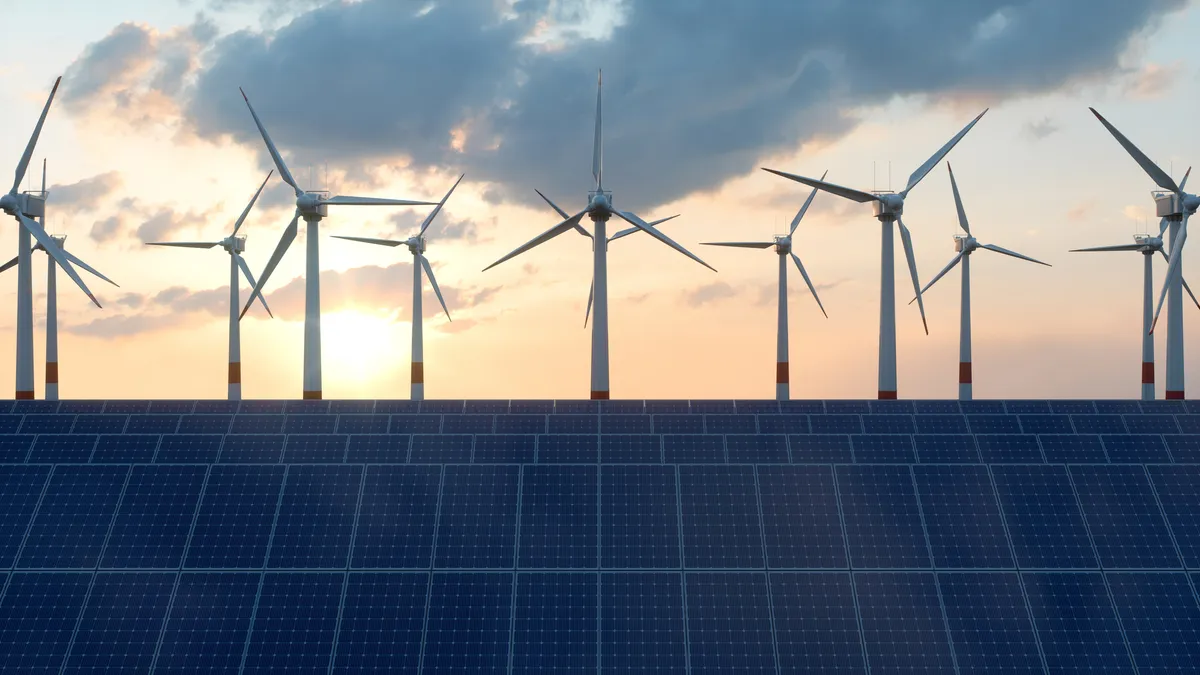Kevin Hagen is the acting CEO of the Clean Energy Buyers Alliance. The alliance is a consortium of the Clean Energy Buyers Association and the Clean Energy Buyers Institute.
Voluntary renewable energy procurement by corporate and institutional customers is playing a crucial role in driving the clean energy transition and reducing carbon emissions in the U.S. power system. In 2022, these procurement deals were equivalent to 70% of the carbon-free energy capacity added to the grid. The Lawrence Berkeley National Laboratory reports that only 30% of new renewable energy was deployed to meet regulatory compliance, demonstrating the outsized decarbonization impact led by corporate action.
The Clean Energy Buyers Association’s more than 400 members include one-fifth of the Fortune 500, and they are energy customers and partners who aspire to achieve a 90% carbon-free U.S. electricity system by 2030. Through their large-scale buying power, they have driven clean energy additions to the grid that benefit everyone. Since 2014, energy customers have voluntarily procured 71 GW of clean energy, equivalent to 42% of all wind and solar capacity added to the U.S. grid.
While not all clean energy deals have equal carbon reduction value, history has shown that corporate and institutional customers’ voluntary procurement is a key force driving carbon reduction. As Columbia University’s Center on Global Energy Policy noted in a 2021 report, corporate renewable energy procurement has “had an encouraging impact on U.S. power sector decarbonization, with a material and increasing share of U.S. wind and solar deployments now driven by the procurement preferences of corporate customers.”
To achieve the rapid decarbonization that global scientists say we need to avoid the worst effects of climate change, we need rapid addition of clean energy to the grid during the decade ahead. In the absence of national emissions reductions mandates, customers’ procurement of renewable electricity has catalyzed the marketplace toward a cleaner grid. We will need even more voluntary, market-driven uptake of clean energy, and the potential benefits of the U.S. Inflation Reduction Act depend on that customer demand.
The legislation has already created over 170,000 new clean energy jobs and is expected to lead to more than 1.5 million additional jobs over the next decade. Goldman Sachs Research estimates that the IRA’s impact could encourage $11 trillion of total clean energy infrastructure investments by 2050, with $2.9 trillion of cumulative investment opportunity across sectors by 2032 for the reinvention of the U.S. energy system, or on average $290 billion annually.
We recognize that to expand the market, increase the numbers of corporate and institutional customers buying clean energy, and maximize the benefits for all of us, we need collaborative engagement and partnership to improve emissions accounting and marketing associated with corporate and institutional energy procurement. We are engaged in making recommendations for that evolution.
We believe that multiple strategic paths are needed to allow organizations to craft procurement strategies that are unique to their resources and individual circumstances, including geographic constraints. These paths include attribute-only procurement, volumetric annual procurement through power purchase agreements and virtual power purchase agreements, tax equity investing and/or direct ownership models, onsite deployment of renewables, emissions-matching of carbon-free electricity, or CFE, procurement, and time/location matched —commonly known as 24/7 — CFE procurement.
At the same time, the Greenhouse Gas Protocol and the FTC Green Guides are both under revision. Energy customers need and want improvements that will provide them with a transparent and credible way to avoid and reduce carbon emissions and receive acknowledgment for those efforts.
The Clean Energy Buyers Institute has submitted recommendations to the organizations overseeing the protocol — World Resources Institute and World Business Council for Sustainable Development — that include adding locational and temporal data hierarchy to accounting provisions in the protocol. We also provided recommendations to the FTC that urge clarifying in the guides that energy customers should have high-quality, detailed data — in addition to the energy attribute certificates they own — to substantiate claims.
At CEBA, we balance the outputs of computer models with market realities — both historic and current. As the Berkeley National Laboratory report notes, “Parsing out incremental impact of individual drivers for renewable energy growth is challenging, given many overlaps and interactions.” The outputs of modeling cannot counter what the reality of the market is.
Various models have produced varied results. The latest modeling from Princeton University’s ZERO Lab regarding hourly energy matching adds to the growing body of research that analyzes how voluntary procurement can drive the greatest impact. A June 2023 study by the engineering economics consulting group Tabors Caramanis Rudkevich found that “hourly energy matching is the least efficient strategy at displacing carbon emissions.”
An April 2023 Massachusetts Institute of Technology study determined that the consequential emissions impact of hydrogen production, or presumably any new load, under annual time-matching requirements, is heavily dependent on the underlying additionality modeling framework. “Enforcing an hourly time-matching requirement in the near-term, when the risk of high emissions from annual time-matching is low, creates additional cost and implementation barriers for scaling up manufacturing that wants to use carbon-free electricity,” the MIT report notes.
While the academic debate continues, time is of the essence in decarbonizing the grid to avert the worst effects of climate change. Customer-driven clean energy procurement is driving and will continue to lead to progress, by creating demand for new renewable generation to be added to the grid.





















